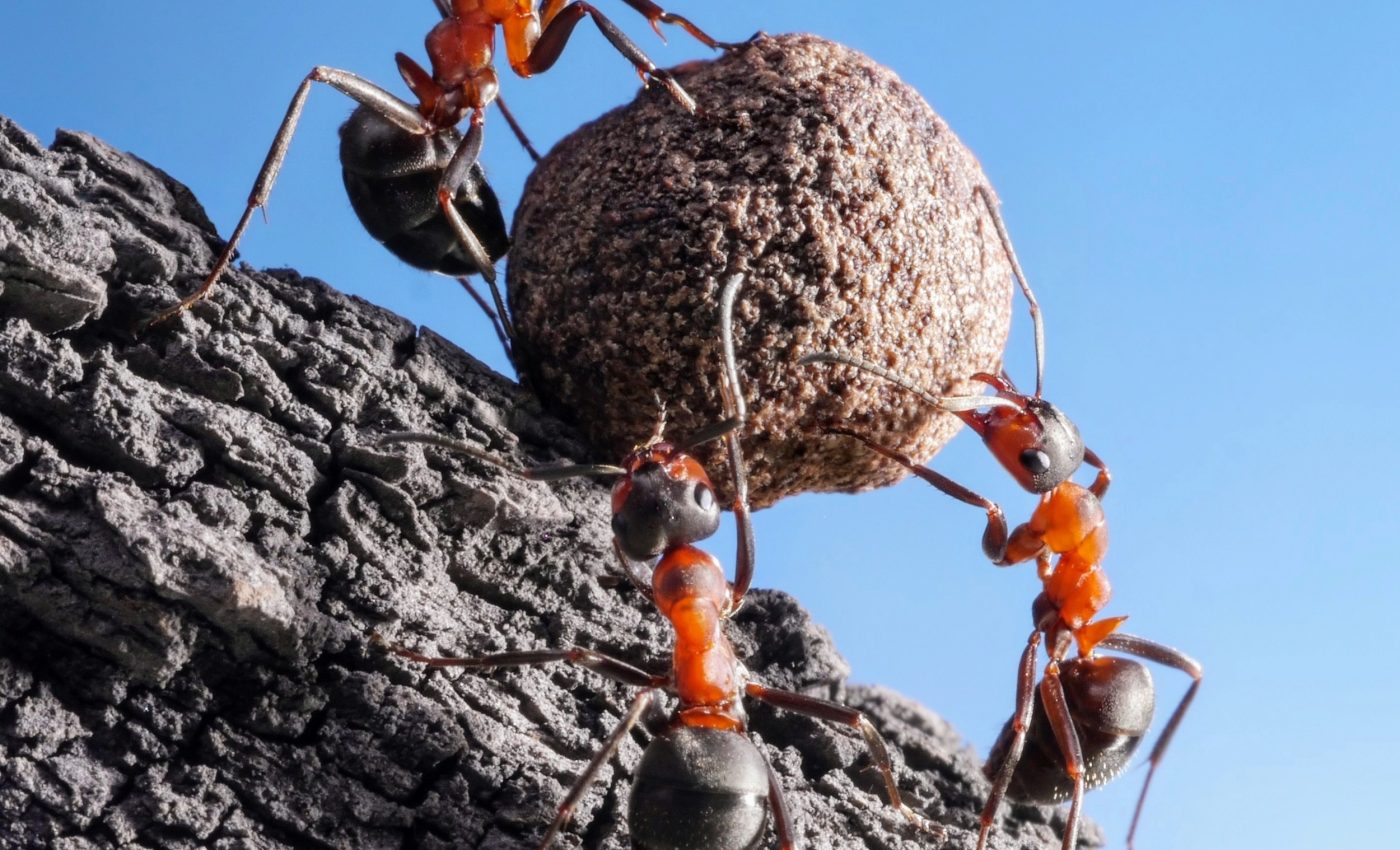
Larger ant colonies drove the evolution of worker castes
It’s no secret that ant colonies operate with remarkable efficiency, functioning as highly organized, cooperative systems that have evolved over millions of years.
Similar to our own societies, these tiny creatures have assigned roles, effectively dividing labor among various ant individuals to ensure the colony’s survival and success.
This division of labor is not random but rather a finely tuned system where each ant knows its place and function within the larger group.
Some ants are dedicated caregivers, meticulously tending to the young and ensuring the next generation thrives, while others take up the mantle of soldiers, bravely guarding the nest and protecting the colony from potential intruders or predators.
Each role, whether defensive, nurturing, or foraging, is vital to maintaining the balance and longevity of the entire colony.
A tale of division and evolution
A recent study involving 794 species of ants reveals a compelling insight: the size of a group plays a crucial role in whether a division of labor develops.
Remarkably, in some species, ants evolve distinct physical features to better serve their respective roles, despite being siblings.
Charles Darwin referred to such worker castes as his “special difficulty” because their evolution was challenging to explain.
“We know that larger ant colonies have more worker castes,” said Philip Downing, a Postdoctoral Researcher from the University of Oulu and one of the study’s authors. “The difficulty is working out how this association came to be.”
Size or caste – what comes first?
The study explored whether large colonies evolved first, paving the way for specialized castes, or if the emergence of castes enabled colonies to grow larger.
To address this question, the researchers compared modern ants to their extinct ancestors using statistical methods.
“Since the ant ancestors no longer exist, researchers had to rely on statistical approaches to infer what their colony sizes and caste numbers would have been, based on their living descendants,” explained Downing.
The size-complexity hypothesis
The research points to a clear pattern: larger colonies tend to evolve before worker castes. This suggests that as ant colonies grow, their social structures become more complex, leading to the development of specialized roles.
“We found that larger colony sizes evolved before worker castes did, supporting what’s known as the size-complexity hypothesis,” said Downing.
“The size-complexity hypothesis is a leading explanation for the evolution of complex life on Earth,” said study lead author Louis Bell-Roberts from the University of Oxford.
“Our research shows that larger colony sizes favored the evolution of increased division of labor, leading to more worker castes and greater variation in worker size.”
Evolution of complex life
These insights not only enhance our understanding of ant colonies but could also provide clues about the evolution of complex multicellular organisms, including plants and animals.
“The implications of our findings extend beyond ants, offering potential explanations for the broader evolution of life’s complexity,” said Bell-Roberts.
Factors underlying ant colony sizes
With the discovery that larger colony sizes promote more worker castes, future research is needed to identify what drives the growth of larger colonies among ants.
“Colony size in ants varies from seven to 14.8 million,” noted Downing. “Can ecological factors, such as the number of predators, climate conditions, or even the number of an ant species’ parasites, explain this?”
His next steps involve large-scale statistical comparisons across various ant species to uncover these factors.
Broader implications of ant caste systems
The evolution of ant castes offers a unique window into social organization and division of labor across species.
Much like human societies, where cooperation and specialization enhance success, ants develop distinct roles that improve colony efficiency.
This reflects broader evolutionary themes, such as how altruistic behavior – working for the collective good – emerges in nature.
The specialization of castes in ants parallels the differentiation of cell types in multicellular organisms, providing a model for studying how division of labor evolves.
Additionally, understanding how environmental factors like predators and climate shape colony size and caste development offers insights into how social organisms adapt to changing environments, an increasingly relevant topic as species face new ecological challenges.
The study is published in the journal Nature Ecology & Evolution.
—–
Like what you read? Subscribe to our newsletter for engaging articles, exclusive content, and the latest updates.
Check us out on EarthSnap, a free app brought to you by Eric Ralls and Earth.com.
—–













